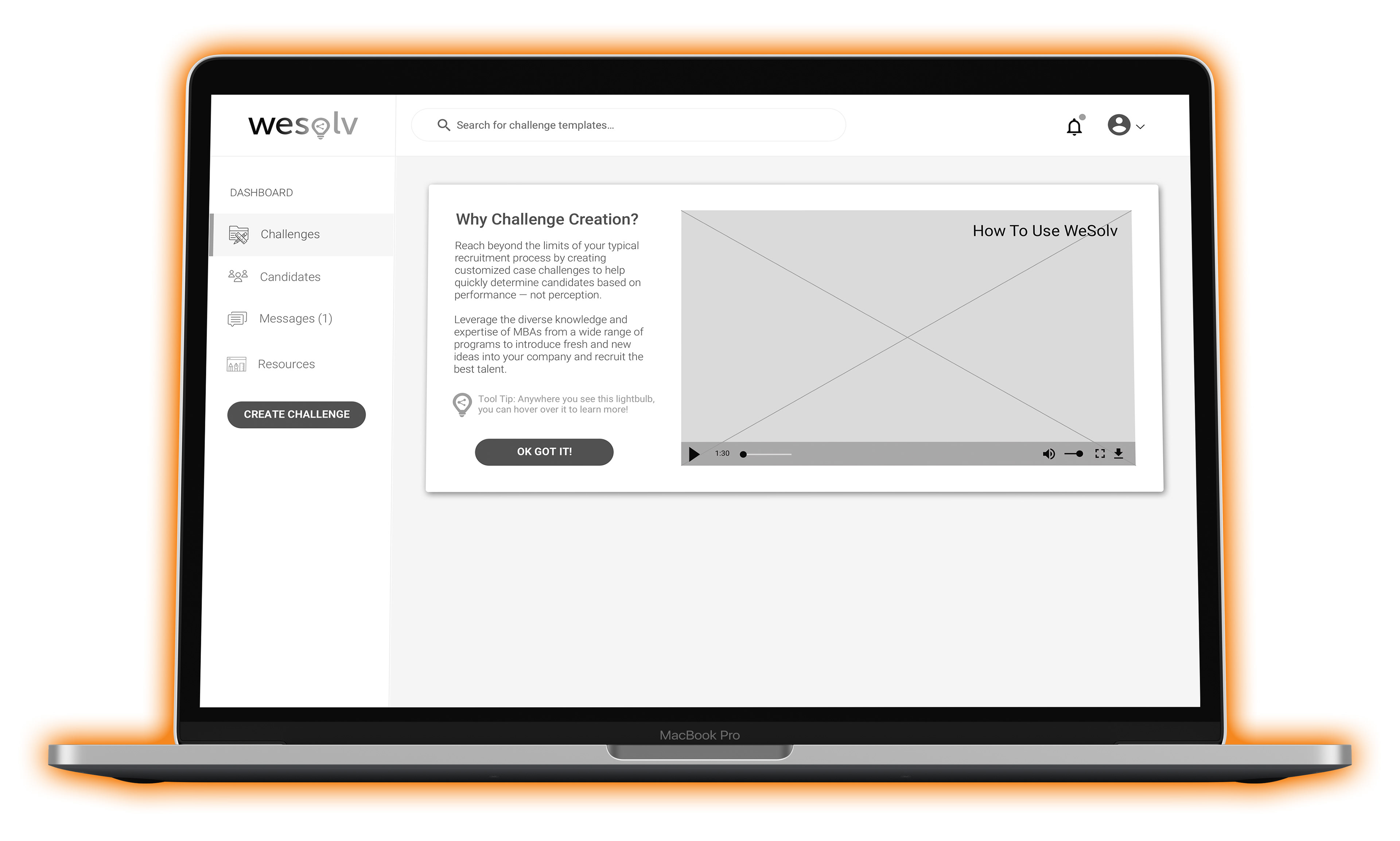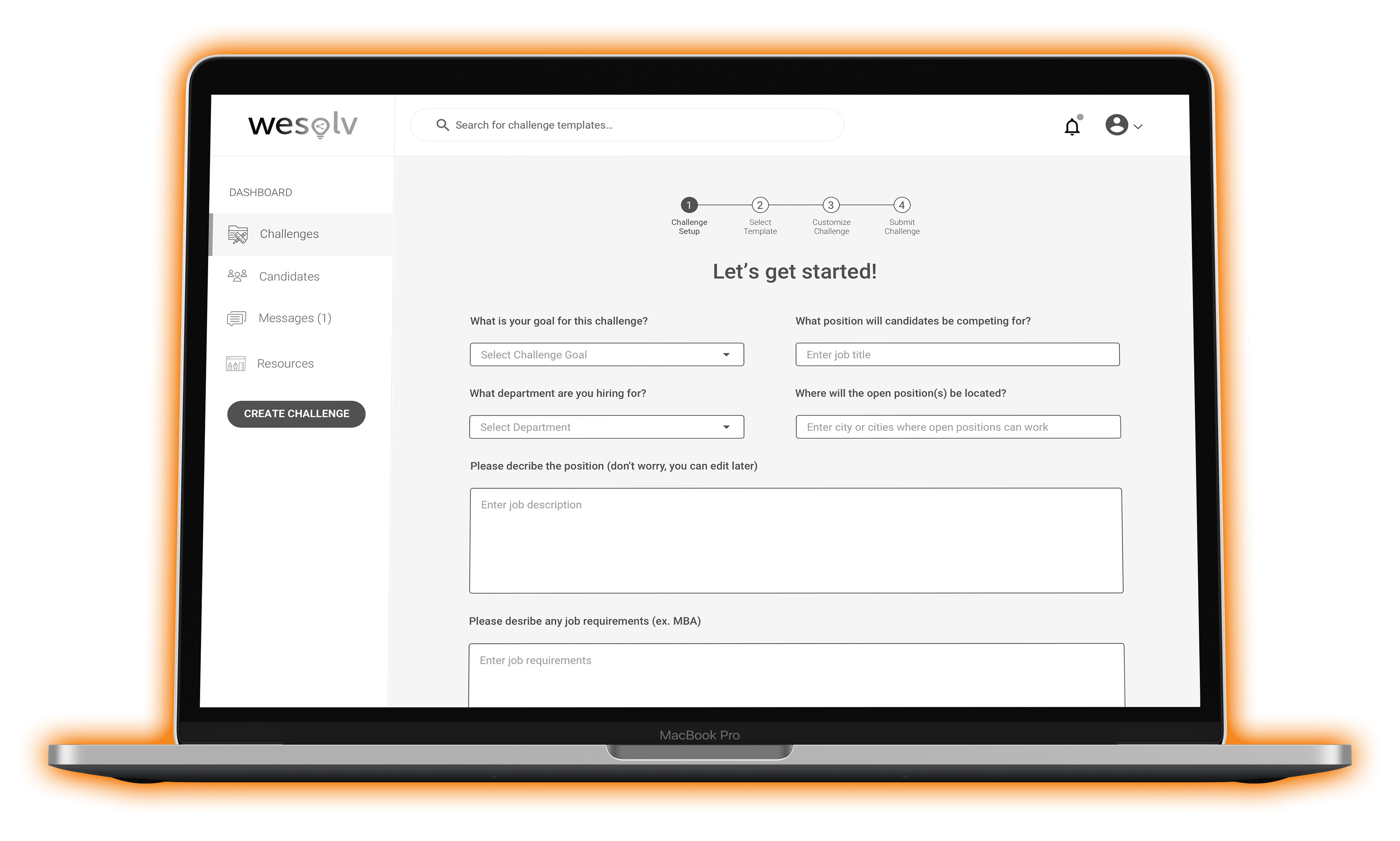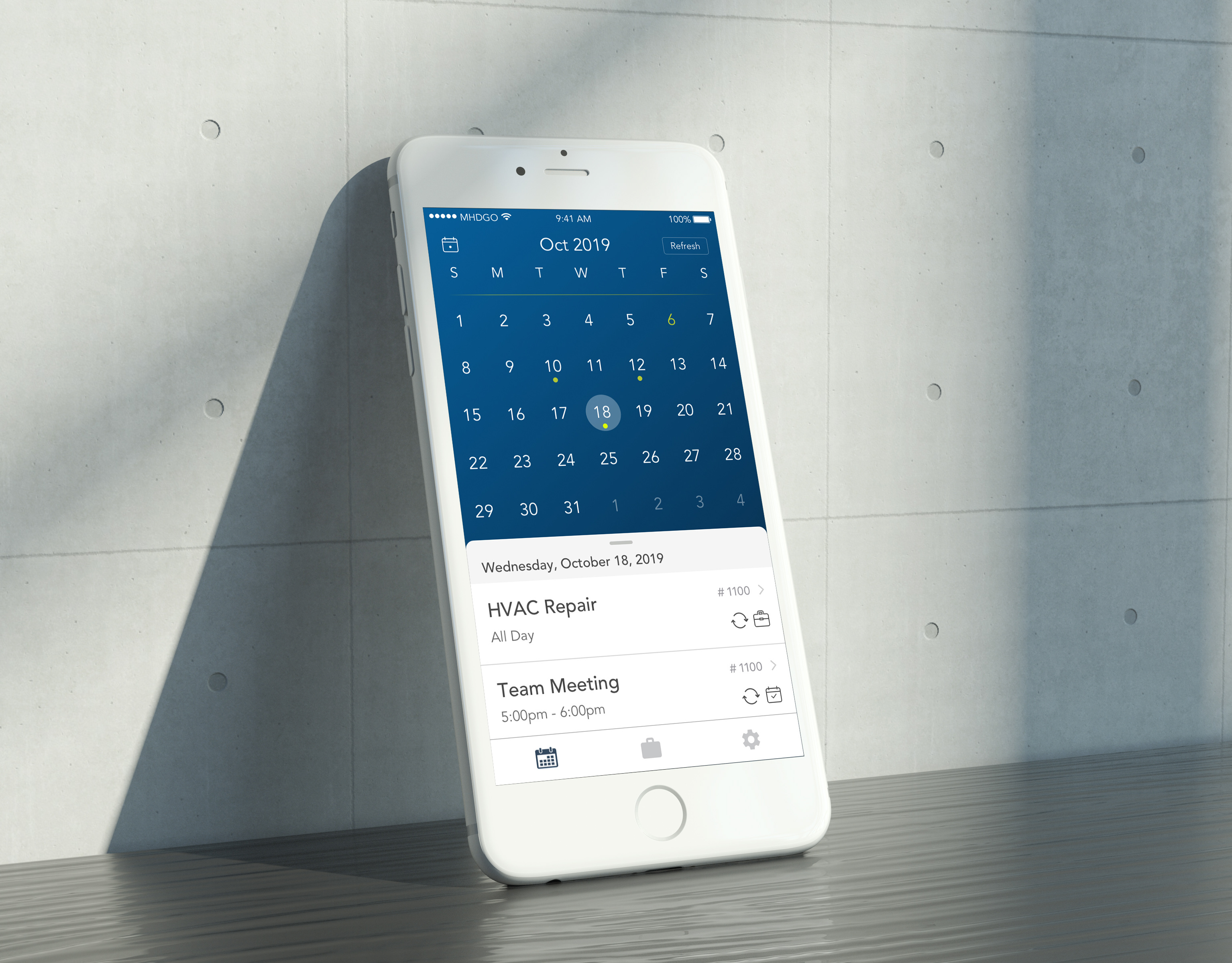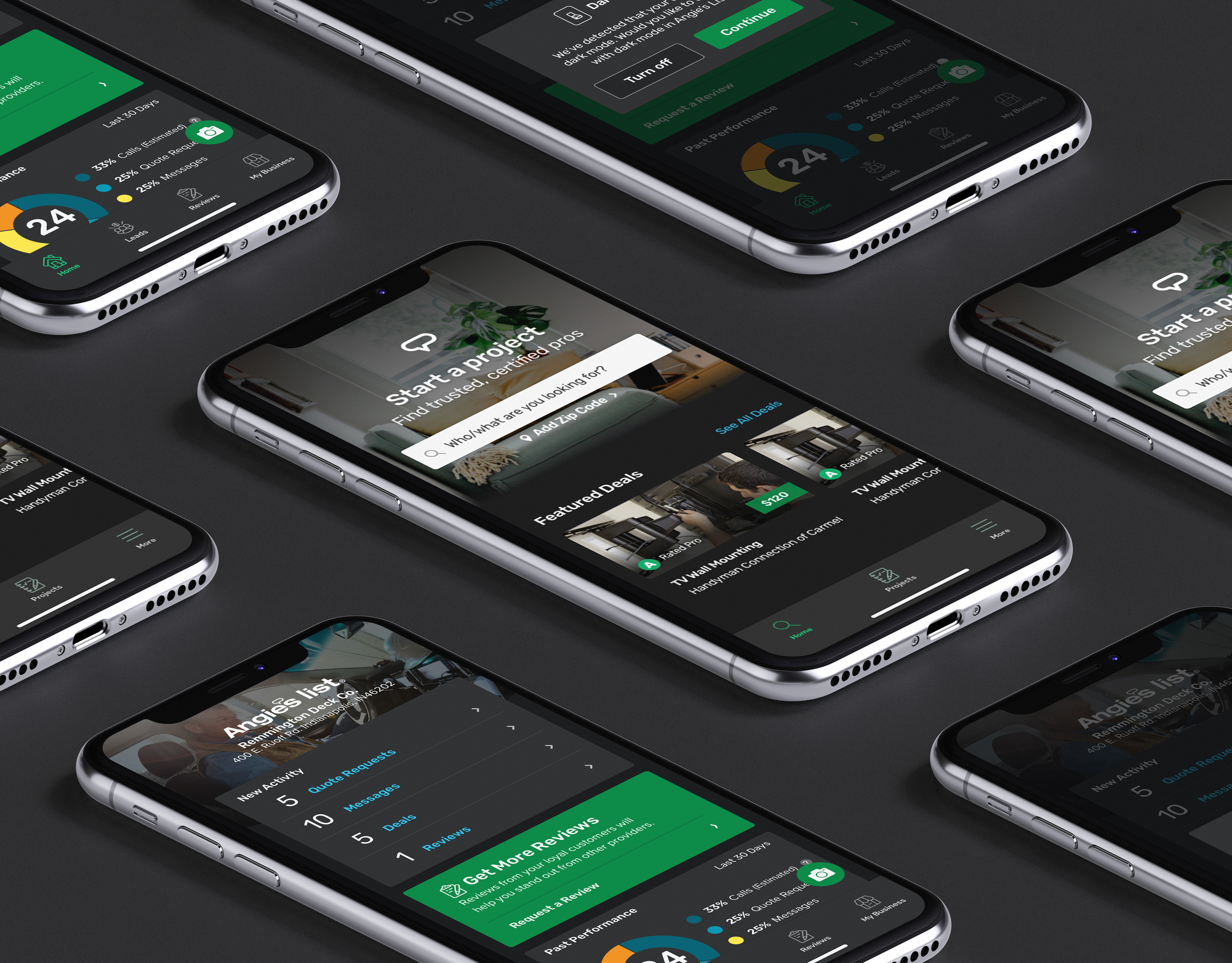Given our short timeframe, we included future considerations based on what we uncovered from research and testing throughout our entire three-week project. These recommendations will make WeSolv more competitive in the hiring and recruitment field through the adoption of best practices found in their competitors and unique features that will set them apart.
Free demo:
Our user research and competitive analysis revealed that WeSolv should provide some type of free demo or trial to incentivize companies to sign up for the platform. The current site did not offer enough value through its student previews. There were discrepancies between what they priced their product and what users thought their product would cost, so a free demo can help Stella and Brittany show users the benefits of using their platform before requesting payment and alleviate the amount of selling they are currently doing for their services over email and in-person.
Pricing strategy:
Many users want to know about pricing before they are willing to consider trying the platform. Either through a consultation with WeSolv or a “try before you buy” feature, our prototype allows WeSolv to try both methods out, thus opening up an opportunity to differentiate themselves from their competitors that do not show pricing.
Individual vs Team Challenges:
While the current platform was focused on team challenges, many users expressed interest in seeing individual challenges as well. While HR managers do value teamwork, they are more concerned with seeing how the individual addresses their particular challenge. Having individual challenges over team challenges will put more emphasis on the work of the individual candidates and will alleviate any need for WeSolv to step in if issues occur within teams.
Anonymous submissions:
Remove all candidate details from the submissions while companies review, in order to remove bias from the evaluation process. Once top performers are identified, candidates’ information would then be revealed. This is would be a unique way for WeSolv to attempt to remove some of the biases of the hiring process while also making them stand out among their competitors. We didn’t find any other hiring platforms with this feature through our research.
Expanding beyond MBAs:
Most of the users we spoke with did not explicitly hire MBAs. While several of them were interested in what WeSolv offered, their recruiting efforts were focused more on a broader range of candidate background and experience. WeSolv expressed that they were planning on expanding beyond just MBA candidates in the future, but from what their target users said, they might want to consider expanding their platform now to be more inclusive to the companies they are trying to partner with.

























